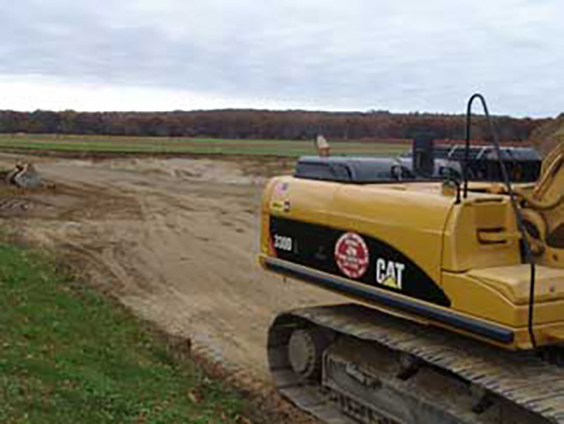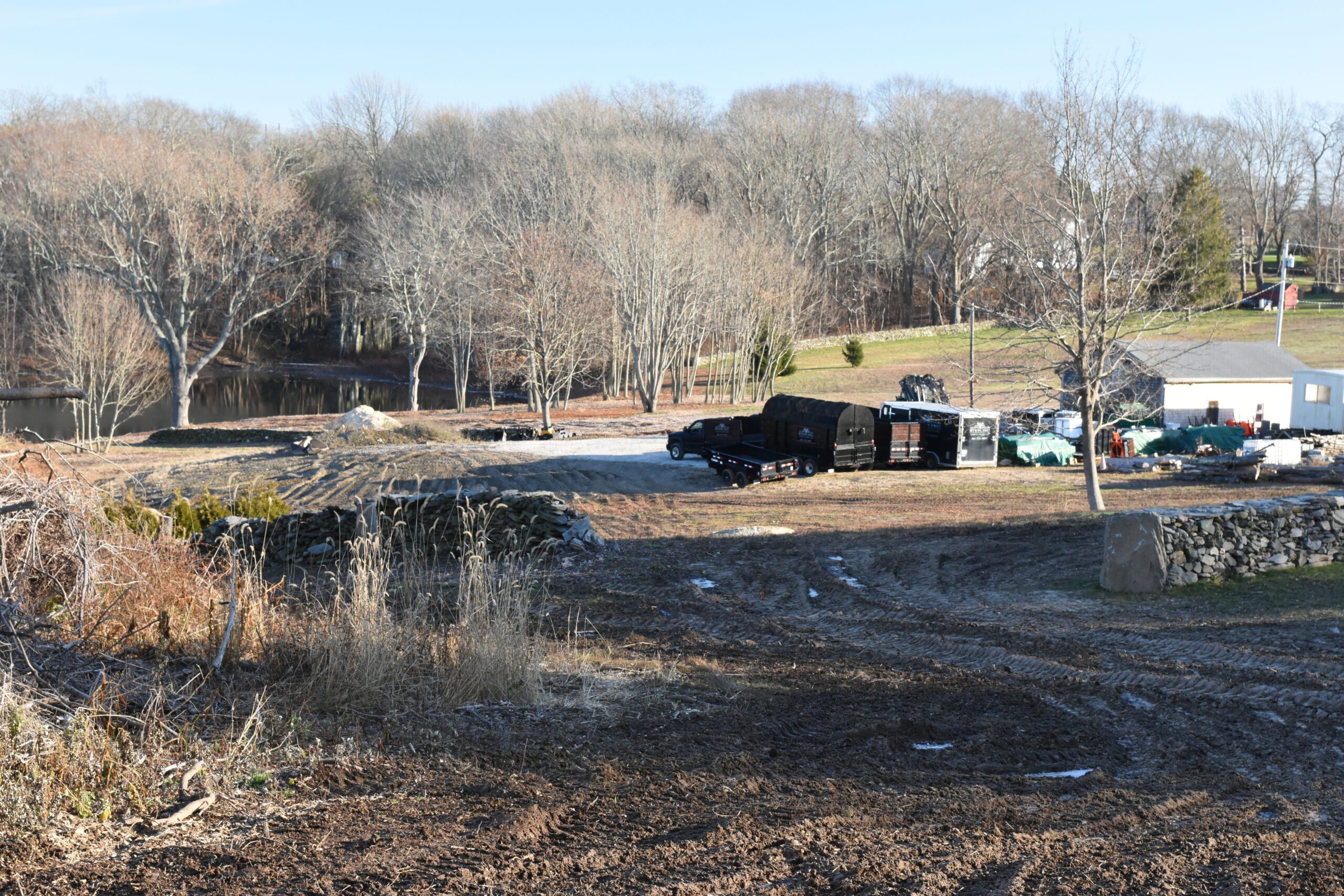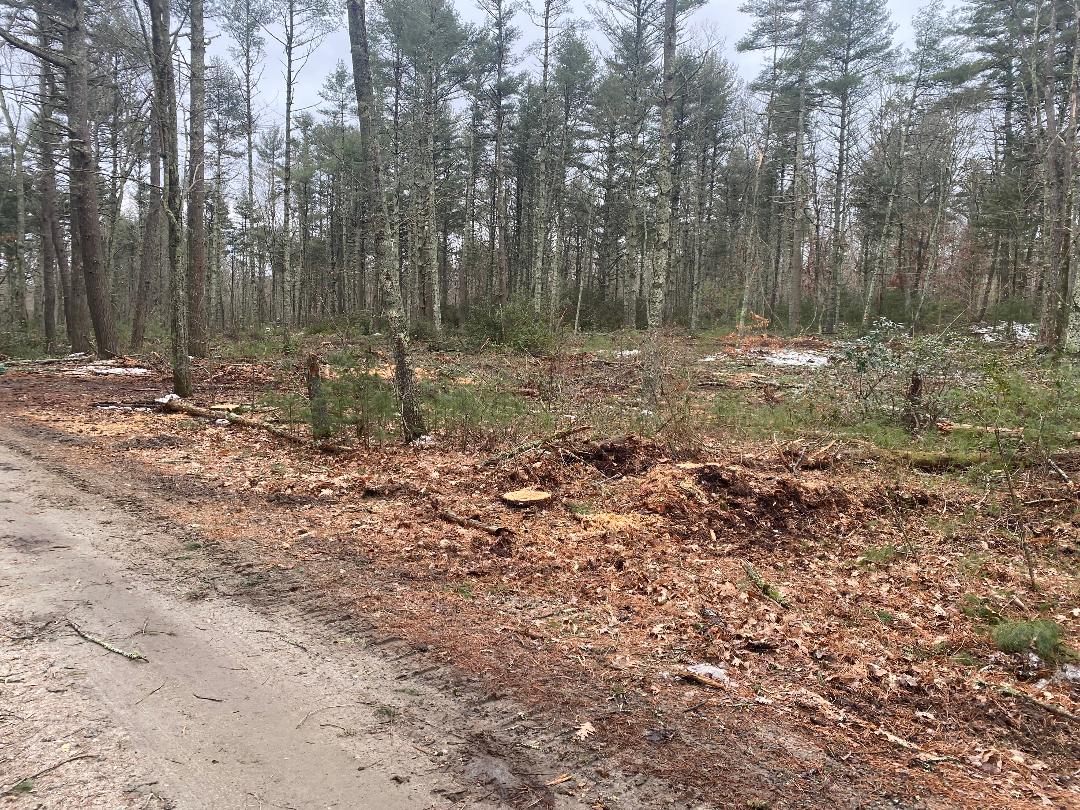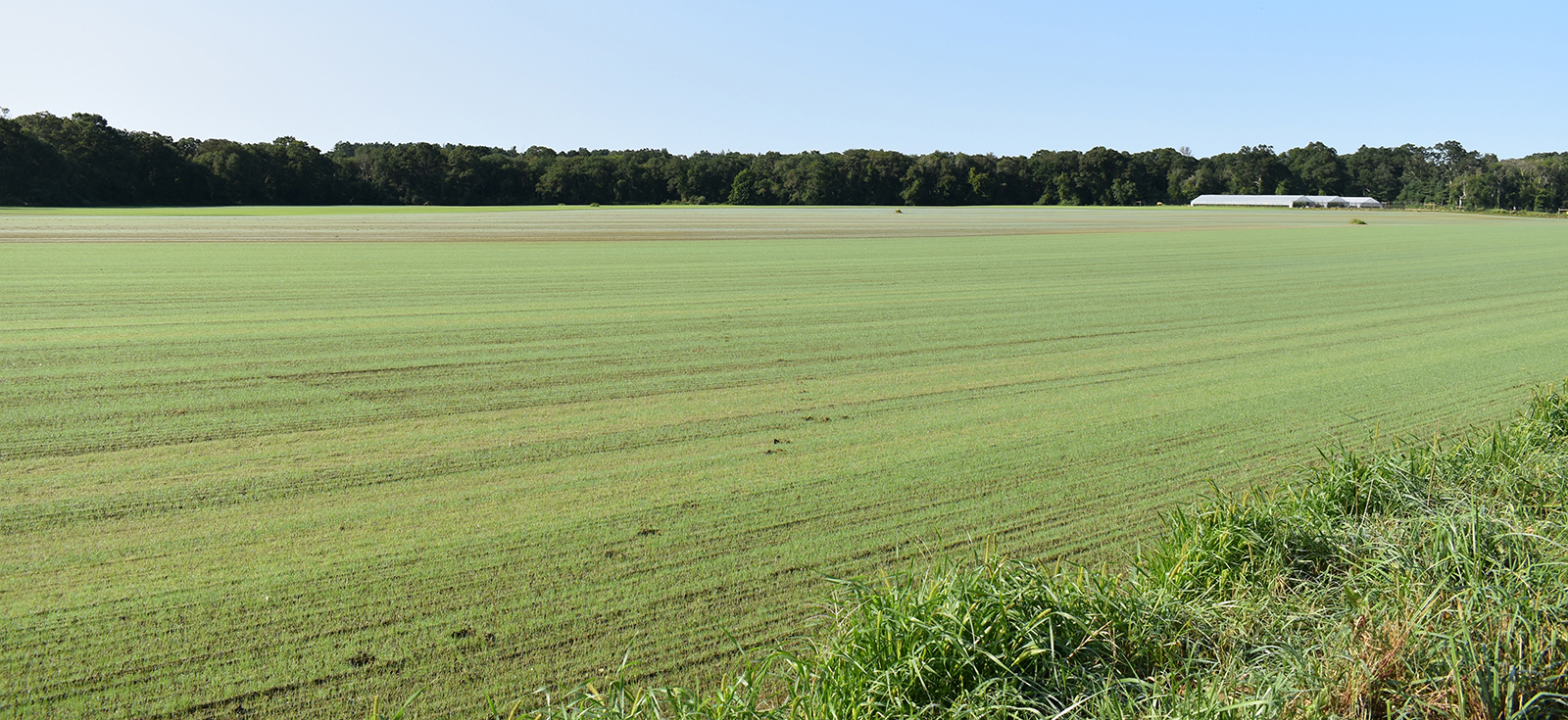URI Rips Up Fine Farmland to Build Parking Lot
October 26, 2012

KINGSTON, R.I. — Rhode Island’s diminishing quantity of farmland recently took another hit — some would even call the loss a decisive blow.
Construction on the University of Rhode Island campus, at Flagg Road and Plains Road, has forever removed a significant portion of agricultural land from the state’s supply. The building of a 330-vehicle parking lot and a new road began about a month before Rhode Island voters are asked to approve $20 million in bond money (Question 6 on the Nov. 6 state ballot) for Narragansett Bay restoration, open space protection, state park improvements and, yes, farmland preservation.
This ironic twist wasn’t lost on Michael Sullivan, a professor of agronomy at the URI College of the Environment and Life Sciences. “This is an exceptionally poor example of environmental advocacy,” the former director of the state Department of Environmental Management said. “The state will soon be asking voters to fund $4.5 million for farmland preservation while a land-grant university is paving over 15 acres.”
URI, once known as the State Agricultural School, was established as a land-grant institution (pdf) in the late 1880s. The Morrill Acts of 1862 and 1890 funded educational institutions by granting federally controlled land to states for them to develop or sell to raise money to establish and endow land-grant universities.
Digging up agricultural land to make way for more development, especially in a state that has lost 80 percent of its farmland since 1945 — only about 40,000 acres remain in production today — and is actively seeking to increase the amount of food it grows, has rubbed many, including Sullivan, the wrong way.
“We’re not just taking about some of the best topsoil in the region; we’re talking about some of the finest soil in the eastern United States,” Sullivan said. “The idea that we needed to ruin this land is fundamentally appalling. Where is the sound thinking? The change in hydrology isn’t reversible. The change we’re making to the land isn’t reversible.”
Sullivan blamed the university for relying heavily on short-term fiscal analysis rather than on sound environmental management.
This parking lot project was originally part of the 2000 University of Rhode Island Kingston Campus Master Plan, which called for “a seamless connection between Flagg Road and Plains Road.” Flagg Road already had been extended to add commuter parking, and the master plan recommended extending Flagg Road further south to meet Plains Road.
Some of the high-quality topsoil being removed from the Flagg Road and Plains Road construction area is being stored at URI’s Peckham Farm, according to Robert Weygand, the university’s vice president for administration and finance. The rest, he said, was being taken by the project’s contractor, the Narragansett Improvement Co., as part of the contract it signed with the university.
Weygand said the work was needed because of the lack of on-campus faculty, staff and student parking. He also took issue with the construction project being compared to ballot Question 6.
“The bond issue is different than what is happening here,” Weygand said. “The bond question is about private property.”
Weygand said the ongoing work includes a range of environmental improvements. He noted that the parking lot surface will be porous and feature a subsurface of crushed stone to better filter runoff. He said the project was incorporating drainage improvements, and making use of rain gardens and stormwater management bioswales. He also noted that the work would improve drainage from the turf fields to the north, which will reduce runoff into White Horn Brook.
Project detractors, however, aren’t impressed. They point to the 40 or so trees that were cut down, including a stand of white pine, and made into a small mountain of woodchips. They note the work of a few-years-old climate change study is gone, because the trees involved in the research project were dug up and removed. Other more established research plots were plowed over and will be moved further north on Flagg Road to land that was once leased to turf farmers.
These concerned people, many of whom are URI affiliated (few would speak with ecoRI News on the record), are angry that little notification or information was provided about the project before work began. They are upset that no real public hearing process was held, and note that some considerations, such as a parking garage, would have reduced the project’s footprint.
They are particularly worried that this work adds to the state’s growing amount of impervious surface. About 12 percent of Rhode Island is currently covered by asphalt, cement and roofing.
The new home to a URI parking lot and road is in the Wood-Pawcatuck watershed, and houses a sole-source aquifer, which Sullivan called the finest drinking water aquifer in the state. The land also is part of the well-protection area for recharge of the drinking water wells for the university and the village of Kingston.
“This entire project is inconsistent with the environmental advocacy that the university purports to be important,” Sullivan said. “We’re bulldozing as fast as we can, and giving away quality topsoil — all to build a high-speed curved road.”
Categories
Join the Discussion
View CommentsRecent Comments
Leave a Reply
Your support keeps our reporters on the environmental beat.
Reader support is at the core of our nonprofit news model. Together, we can keep the environment in the headlines.
We use cookies to improve your experience and deliver personalized content. View Cookie Settings




Thanks Michael Sullivan for speaking out on this. I work at URI and took a one week vacation and returned to find this field destroyed. I bike to work through the existing parking lot and it is empty when I arrive and when I leave. I suppose there is some point during the day when it fills, but I haven't seen it yet. The damage is done now. It's really too bad that URI projects didn't have to be reviewed by South Kingstown Planning and Zoning Boards. Then the project would have had a public review process. I had no idea they were building a road too. The existing road is not heavily used. It's easy and safe to bike on because there is not a lot of traffic. A new road with fewer stops may dump more traffic there and remove one more safe bike route to campus.
RIC has also torn up green space to expand parking.
One underlying problem is that the Board of Governors for Higher Ed provides, at great expense, "free" parking for all faculty and staff (and free parking for all RIC students) while providng no incentive to use transit which is actually quite extensive to both RIC and URI. For example there are about 34 buses each way weekdays to URI on the 64 and 66 lines but URI does not promote it for fac/staff. Those who bike or walk to work get no "cashout" benefit. Private universities do support transit, and the legislature has considered bills requiring public higher ed to so the same. It is time they pass such legislation since the URI administration is clearly not interested in taking steps to protect the environment thru transportation policy.
I agree with Barry. Maybe the problem is not too few parking spots, but too many cars.
Rhode Islanders need to start embracing public transit.
This is an extremely hypocritical move by the University; one that promotes sustainability through its' NEMO Programl. Beyond sad and disgusting. Kudo's for Mr. Sullivan for calling out URI. It is reversible!
Wait – I'm finding this article and Mr. Sullivan's comments a little confusing. Is the parking lot that's being built going to be porous or not? While I'm not in favor of plowing up agricultural fields in favor of parking lots, and I would rather see a smaller footprint project like a parking garage with appropriate stormwater controls or more education/ecouragement for public transportation, IF the parking lot is to be made of porous pavement, then I'm at a loss as to why Mr. Sullivan's is complaining about the change in hydrology (since porous parking lots are usually MORE porous than surrounding native soils) and the "other concerned people" mentioned in the article are "particularly worried that this work adds to the state’s growing amount of impervious surface. Porous pavement is not "impervious" by its nature. If indeed the parking lot is porous, then these fine "concerned people" need not be concerned about this particular parking lot….
Porous pavement in parking lots is an extremely well accepted technology that is being used all over New England. It works extremely well in both warm and cold weather and requires LESS salting to maintain clear conditions in snow and ice. Research done at the University of New Hampshire Stormwater Center has shown with when installed correctly (and I would point out that since this parking lot has to be installed under RIDEM's new Stormwater Manual guidelines, which mirror UNH Stormwater Center's guidelines), porous pavement parking lots are an excellent way to maintain hydrology while creating parking.
I would've thought that Mr. Sullivan would've known this, after his years at RIDEM.
Anon – The existing lot next to the construction is also 'pervious'. As flooding in that area has shown, it doesn't work very well, and certainly isn't more porous than nearby areas. Texture is also a factor, turf/veg cover slows down the flow of water, giving it more time to infiltrate. Better than nothing, but will still alter the hydrology. I'm bothered more by all the soil being removed. It's aeolian silt, very fine particles that accumulated during the extreme winds generated by the glaciers receding. It's mind boggling to think it's being removed for such a trashy 'improvement' project. I want to know if Narragansett Improvement is compensating URI for the soil and, if so, how meager of a discount did the current administration pawn off a resource that will take another glaciation to replenish.
Definition of short sighted gain/long term tragedy. Anyone have more information?
Apparenlyt URIwtf (Mr. Sullivan?), you haven't seen a porous pavement demonstration. While I cannot comment on porous parking lots that haven't been built to the specifications in the new Stormwater Manual, I HAVE seen demonstrations of literally thousands of gallons of water poured onto a porous pavement parking lot that sink into it immediately. I've seen porous pavement parking lots in heavy rain storms that look almost dry when there are puddles of standing water on the native land surround the parking lots. While certainly turf/vegetative cover slows down water from running off a surface, a pervious asphalt parking lot quite simply does NOT have any runoff – water infiltrates the porous asphalt almost immediately. If you had ever been to see a porous asphalt parking lot in action, you would know that.
Again – certainly I have no argument that farmland is worth saving in the grand scheme of things. However, Mr. Sullivan's comments in the article regarding hydrology, porous pavement, and environmental advocacy are – well, let's just say- factually challenged.
Mr. Sullivan may know farmland, but he proves by his comments that he doesn't know much about hydrology or the mechanics of porous pavement. If he wanted to comment on the loss of topsoil, then fine. However, as "the former director of the state Department of Environmental Management" one might expect him to have a better general knowledge of the environment, hydrology, drinking water protection, environmental advocacy and all of the other "buzz words" he brought up in an attempt to talk badly about what is actually quite a worthy project about which he shows in his comments to have no real environmental knowledge.
Nope, not Mr. Sullivan, just a student, put down your weapons. And I am familiar with how well porous pavement can mitigate runoff, however, I was speaking specifically of my experience with the current porous lot adjacent to the lot under construction. It doesn't work well, I'll leave it at that, and defer to your considerable experience as to why that may be. But hey, keep up the anonymous web attacks!